How to write a resignation letter template
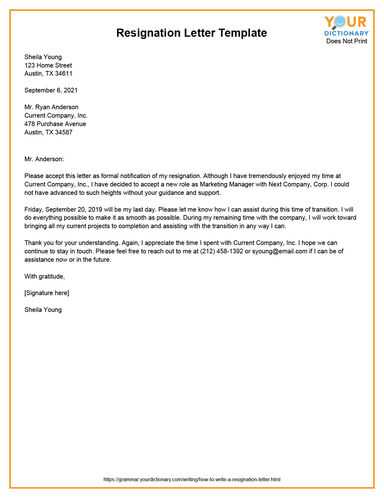
Begin with a clear and direct statement of your intent to resign. Include the specific date of your last working day, as this provides clarity for both you and your employer. Be concise, but don’t leave out key details like your position or the department you work in.
Keep the tone professional. Even if your experience at the company wasn’t perfect, avoid expressing negative feelings. Focus on gratitude for the opportunity and the experience you gained. This will help leave the door open for positive references or future collaborations.
Include a reason for leaving. While it’s not mandatory, providing a brief and neutral explanation can help your employer understand your decision. Keep it professional and steer clear of personal grievances. A simple statement such as, “I have decided to pursue a new career opportunity,” suffices.
Finish with a polite offer to assist with the transition. Let them know you’re willing to help train a replacement or provide any necessary documentation to ensure a smooth handover of your responsibilities.
How to Write a Resignation Letter Template
Keep your resignation letter simple and clear. Focus on the main points: your intention to resign, your last working day, and a brief reason if appropriate.
1. Start with a Formal Greeting
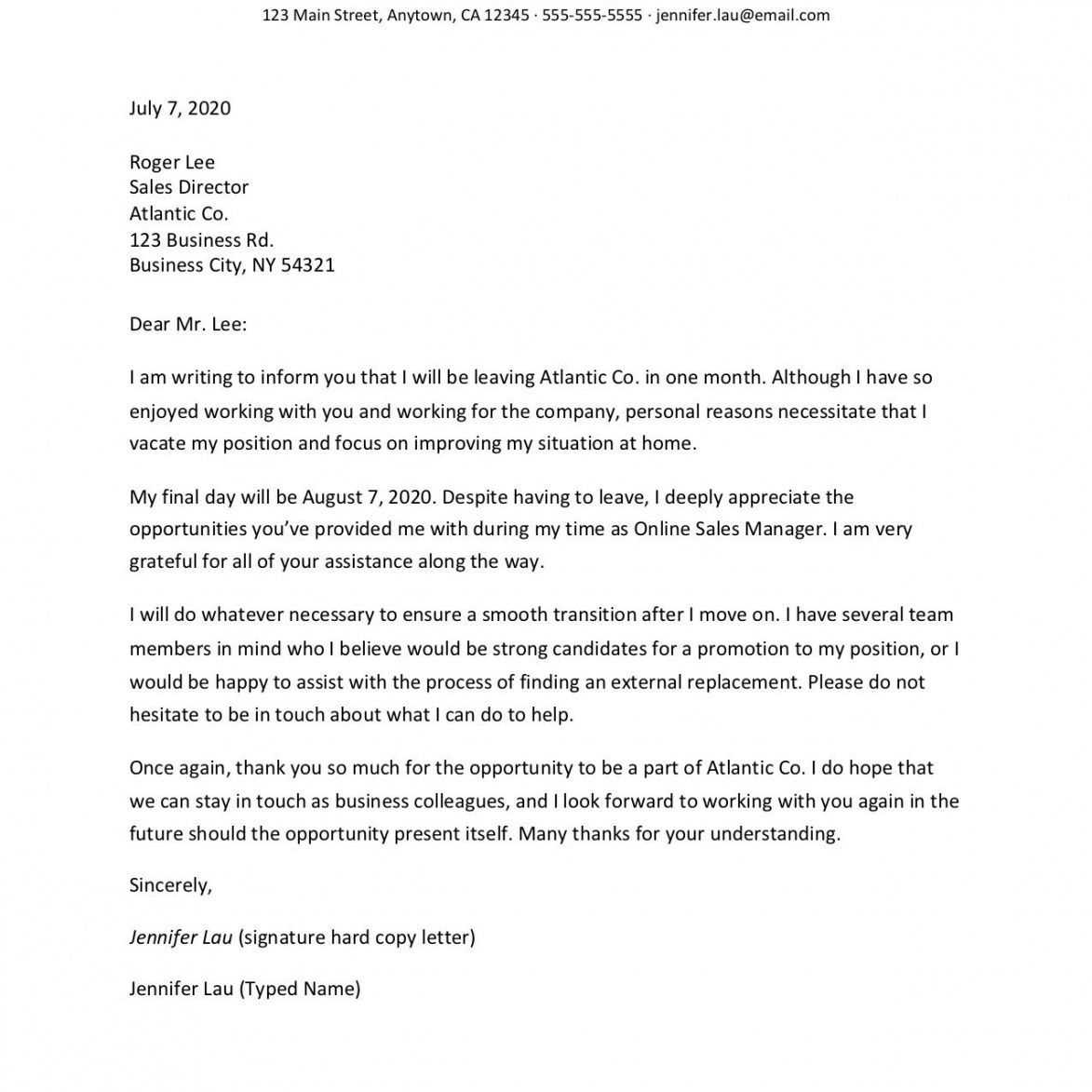
Address your manager or supervisor politely using their title and name. For example:
- Dear Mr. Smith,
- Dear Ms. Johnson,
2. State Your Resignation Clearly
Immediately state your intention to resign. Be direct and avoid vague language:
- I am writing to formally resign from my position as [Job Title] at [Company Name].
- Effective [Last Working Day], I will no longer be part of the team.
Keep the tone professional and positive. If you feel comfortable, you may briefly mention the reason for your departure, but this is not necessary.
3. Express Gratitude
Show appreciation for the opportunities and experiences gained. This helps maintain a positive relationship:
- Thank you for the opportunity to work at [Company Name].
- I appreciate the support and guidance I’ve received during my time here.
4. Offer Assistance with Transition
If possible, offer your help in making the transition smooth:
- I am happy to assist with training my replacement or any other tasks during my remaining time here.
5. Close Formally
End your letter with a professional closing, such as:
- Sincerely,
- Best regards,
Then, sign your name beneath the closing statement. Make sure your last working day is clear in the letter for reference.
Choosing the Right Tone for Your Letter
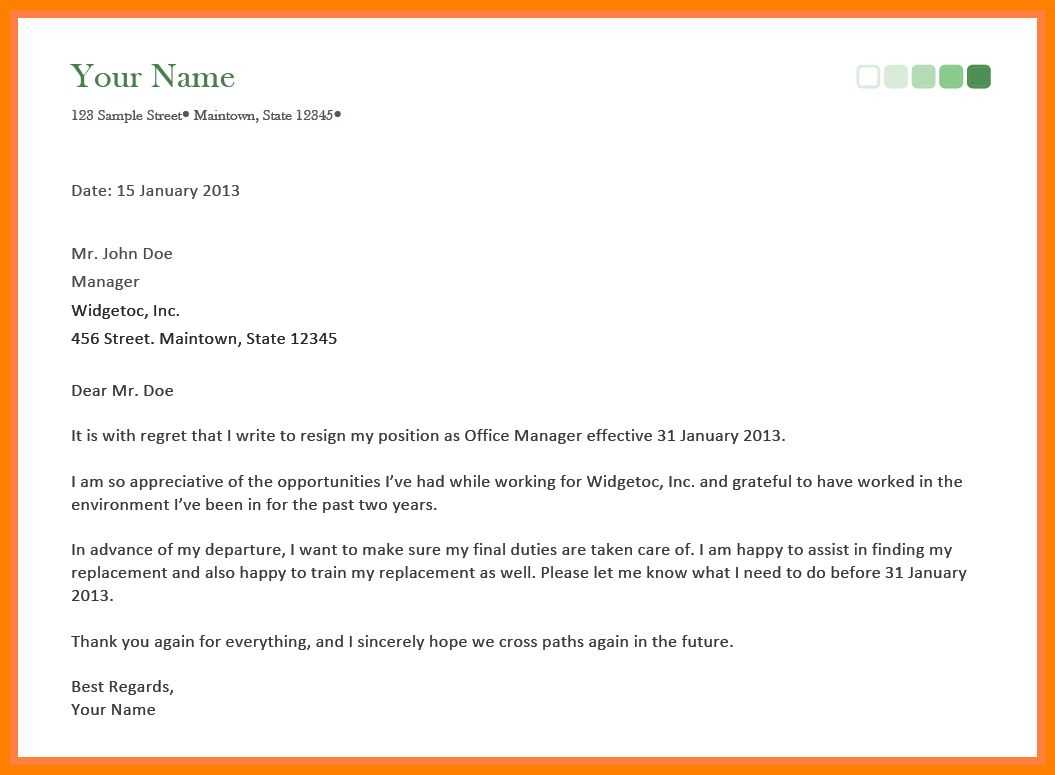
Be direct but polite. Your resignation letter should convey your decision clearly without unnecessary embellishments. Focus on being professional yet approachable, leaving a positive impression. Avoid using harsh language or overly emotional tones, even if you’re frustrated. Keep the message respectful and straightforward.
Maintain Professionalism
Avoid sounding too casual or too formal. Strive for a balanced tone that aligns with your company culture. If you had a positive relationship with your employer, you can be a bit more conversational, but keep it polite and focused. It’s important that your tone reflects your respect for the company and its values.
Express Gratitude
While you may be leaving for personal reasons or seeking new opportunities, expressing gratitude for the experience shows maturity. A simple “thank you for the opportunity” can go a long way in maintaining goodwill with your employer. This helps you exit gracefully, ensuring doors stay open for potential future collaboration.
Structuring the Content: Key Elements
Begin with a clear and direct heading. Include your name, job title, and the date of your resignation. This provides clarity and ensures your intention is unmistakable from the start.
Next, express gratitude for the opportunity to work with the company. Acknowledge specific experiences or aspects you valued, such as professional growth, teamwork, or key projects. Keep it brief and sincere.
Provide the necessary notice period. If possible, mention your willingness to assist with the transition process. This shows respect for the organization and helps maintain goodwill.
End with a closing statement, reinforcing your appreciation. Offer your best wishes for the company’s future success. A positive and professional tone at the conclusion leaves a lasting impression.
How to State Your Reason for Leaving
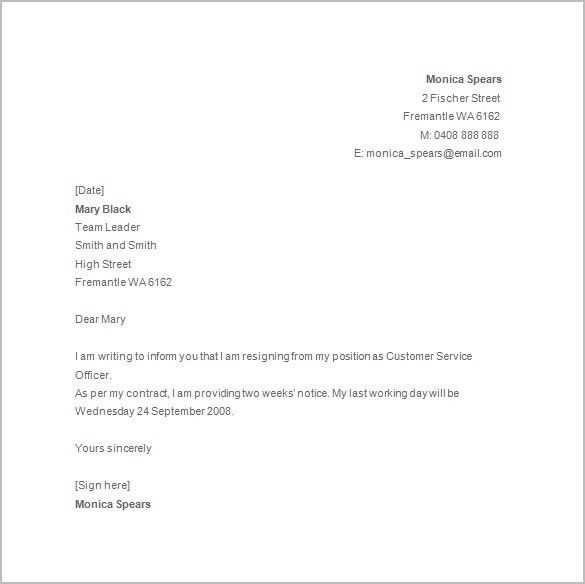
Be direct and concise. Mention your reason for leaving without oversharing personal details. Keep the tone professional, yet respectful.
If you’re leaving for a new job, clearly state that you’re pursuing new career opportunities. You could say, “I have accepted a position elsewhere that aligns with my career goals.” If it’s for personal reasons, a simple statement like, “I’m making a change to focus on personal growth and new challenges,” is sufficient.
Avoid negative language or criticizing your current employer. Stick to positive or neutral phrasing, and if applicable, thank the company for the opportunity. This helps maintain good relationships and leaves the door open for future opportunities.
Professional Sign-off and Final Thoughts
Wrap up your resignation letter with a clear and polite closing. Express appreciation for the opportunity, but avoid overstating your sentiment. The goal is to remain courteous without sounding overly sentimental. Your final line should leave a positive impression, ensuring that you maintain a professional relationship post-departure.
Closing Line Examples
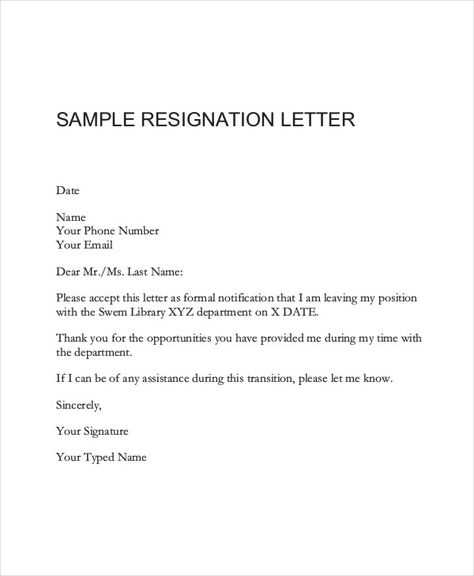
Here are a few ways to close your letter professionally:
| Example | When to Use |
|---|---|
| “Thank you for the opportunity to contribute to the team.” | Use when you want to express appreciation without elaborating. |
| “Wishing the company continued success.” | Suitable for a neutral yet supportive closing. |
| “I look forward to staying in touch.” | Ideal when you want to leave the door open for future professional interactions. |
Final Check Before Sending
Before you submit your resignation letter, make sure it’s concise and free from any emotional or irrelevant details. Re-read the letter to ensure you haven’t unintentionally included anything that could be misinterpreted. A respectful and polite tone is key to ending your time at the company on good terms.
Common Mistakes to Avoid in Your Resignation Letter
Avoid being overly emotional in your resignation letter. Stay professional and clear, even if you have strong feelings about your departure. Keep your tone neutral and avoid airing grievances or complaining about the company or colleagues.
Don’t forget to include your last working day. Clearly state the date to avoid any confusion regarding your notice period. This ensures both you and your employer have a clear understanding of the transition timeline.
Steer clear of unnecessary details about your reasons for leaving. You don’t have to explain everything, especially if your reasons are personal or irrelevant to your work. Keep the focus on your departure without oversharing.
Don’t neglect to express gratitude. Even if your experience wasn’t perfect, it’s important to thank your employer for the opportunities and experience gained during your tenure. A positive note at the end helps maintain professional relationships.
Refrain from using informal language or slang. Keep the letter formal and to the point. A resignation letter is a professional document, and your language should reflect that level of professionalism.
Avoid making it too long. A resignation letter should be concise. Stick to the key points and keep it brief to maintain clarity and focus.
Don’t fail to proofread your letter. Mistakes in spelling or grammar can undermine the professionalism of your letter. Ensure that everything is polished before submitting it.